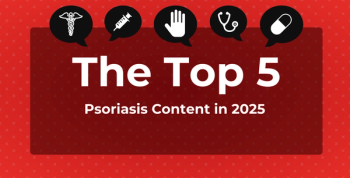
Telehealth Delivers Early Palliative Care as Effectively as In-Person Care
The findings can help reduce barriers that delay the onset of recommended palliative care in advanced cancer.
Early palliative care can be delivered via telehealth with equivalent quality-of-life effects as palliative care delivered in person to patients with advanced non–small cell lung cancer (NSCLC), according to late-breaking results presented during the Sunday plenary session at
Whether the palliative care was delivered in person or via telehealth, the most common topics discussed during the visit were similar and included building and establishing rapport to create a relationship with the patient and their family, identifying symptoms and grading symptom management, and coping with serious illness, explained Joseph Greer, PhD, codirector of the Cancer Outcomes Research & Education Program at Massachusetts General Hospital Cancer Center and associate professor of psychology in the Department of Psychiatry at Harvard Medical School, during his presentation of the results.
A lung cancer diagnosis disrupts the lives of patients and their families, and Greer and his team began developing this study design well before the COVID-19 pandemic.
National guidelines from ASCO recommend palliative care is integrated with oncology early on for patients with advanced cancer.1 However, due to limited access and resources, these guidelines are often not followed, Greer explained. In a discussion of the trial following Greer’s presentation, Monika K. Krzyzanowska, MD, MPH, FRCPC, FASCO, of the Odette Cancer Centre, Sunnybrook Health Sciences Centre, in Toronto, Canada, noted that a meta-analysis found a median duration of palliative care before death to be only 19 days.2
Since the onset of the pandemic, telehealth visits have accelerated dramatically and health care leaders recognize the benefits of this technology, and studies have shown cost savings through the use of telehealth among nonelderly patients with cancer.3 The large-scale comparative effectiveness trial of early palliative care delivered via video vs in person was conducted to determine if telehealth could overcome these barriers to provide palliative earlier to patients with advanced cancer.
A total of 1250 patients with advanced NSCLC were enrolled between June 14, 2018, and May 4, 2023. The mean age for participants was 65.5 years and 54% were female patients, and the majority were White (82.1%). Quality of life was measured using regression modeling with an equivalence margin of ±4 points on the Functional Assessment of Cancer Therapy-Lung.
The patients had been diagnosed in the past 12 weeks before enrollment and were randomly assigned to meet every 4 weeks with a palliative care clinician either via video or in the clinic. Patients continued their meetings through the course of their disease, and they completed self-report measures at baseline, 12 weeks, and 24 weeks.
By week 24, the telehealth group had a mean of 4.75 palliative care encounters and the in-person group had a mean of 4.92 encounters. The quality-of-life scores were equivalent in both groups (adjusted means: 99.67 for telehealth vs 97.67 for in-person; P < .043 for equivalence).
The study also compared caregiver participation rates and found that this was slightly lower in the telehealth group vs the in-person group (36.6% vs 49.7%; P .0001).
A comparison of patient-reported depression and anxiety symptoms (Patient Health Questionnaire-9; Hospital Anxiety and Depression Scale), coping (Brief COPE), and perceptions of prognosis (Perceptions of Treatment and Prognosis Questionnaire) found the groups did not differ.
“These study findings add critical evidence to support access to telehealth services, especially to vulnerable populations with serious illness, and will ideally inform policy decisions regarding the role and coverage of virtual care in the future,” Greer said.
However, in a press conference Greer acknowledged the challenge of palliative care referral rates and recruiting participants for the trial. There is a misperception about what palliative care is and how it differs from end-of-life care in a hospice, he said.
“We usually say something to the effect of ‘a palliative care team is here to support you to live…as well as possible for as long as possible,’” he said.
They train their clinical research coordinators “to describe how palliative care provides an extra layer of support.” When patients start to meet with the palliative care clinician, they are usually grateful the relationship was established with someone who doesn’t “hold the keys to chemotherapy.”
He explained that palliative care clinicians are often treated as a third party with whom the patient can openly share concerns about side effects or symptoms.
“I am a psychologist, and some of my patients will even share with me how they hide their symptoms and side effects, because they fear that they may have to have a hiatus from treatment due to those,” Greer explained. “And so, this is another way where that synergy not only helps optimize efficiency and time for both clinicians—the oncologist and palliative care clinician—but really allows for sort of proactive symptom management, ideally, to improve adherence to treatment.”
While the study answered questions around the feasibility of delivering early palliative care by video and the effectiveness of it, there are some unanswered questions, Krzyzanowska noted in her discussion. It is unclear if these results can be replicated in less ideal settings, since as well as what the implication is of the lower caregiver attendance in the video group. In addition, it has yet to be determined if virtual early palliative care is for every patient.
“This is a very important issue as there have been concerns that the increasing adoption of virtual may exacerbate disparities,” she said, and pointed to results of a study of almost 30,000 encounters during the early phase of the pandemic,4 which found non-White race, preferred language other than English, low household income, and Medicaid coverage “were negatively associated with utilization of virtual care. Hence it will be very important as we move forward to understand how the adoption of virtual care is impacting different patient populations and communities.”
Reference
1. Smith CB, Phillips T, Smith TJ. Using the new ASCO clinical practice guideline for palliative care concurrent with oncology care using the TEAM approach. Am Soc Clin Oncol Educ Book. 2017:37:714-723. doi:10.1200/EDBK_175474
2. Jordan RI, Allsop MJ, ElMokhallalati, et al. Duration of palliative care before death in international routine practice: a systematic review and meta-analysis. BMC Med. 2020;18(1):368. doi:10.1186/s12916-020-01829-x
3. Patel KB, Turner K, Tabriz AA, et al. Estimated indirect cost savings of using telehealth among nonelderly patients with cancer. JAMA Netw Open. 2023;6(1):e2250211. doi:10.1001/jamanetworkopen.2022.50211
4. Qian AS, Schiaffino MK, Nalawade V, et al. Disparities in telemedicine during COVID-19. Cancer Med. 2022;11(4):1192-1201. doi:10.1002/cam4.4518
Newsletter
Stay ahead of policy, cost, and value—subscribe to AJMC for expert insights at the intersection of clinical care and health economics.








































